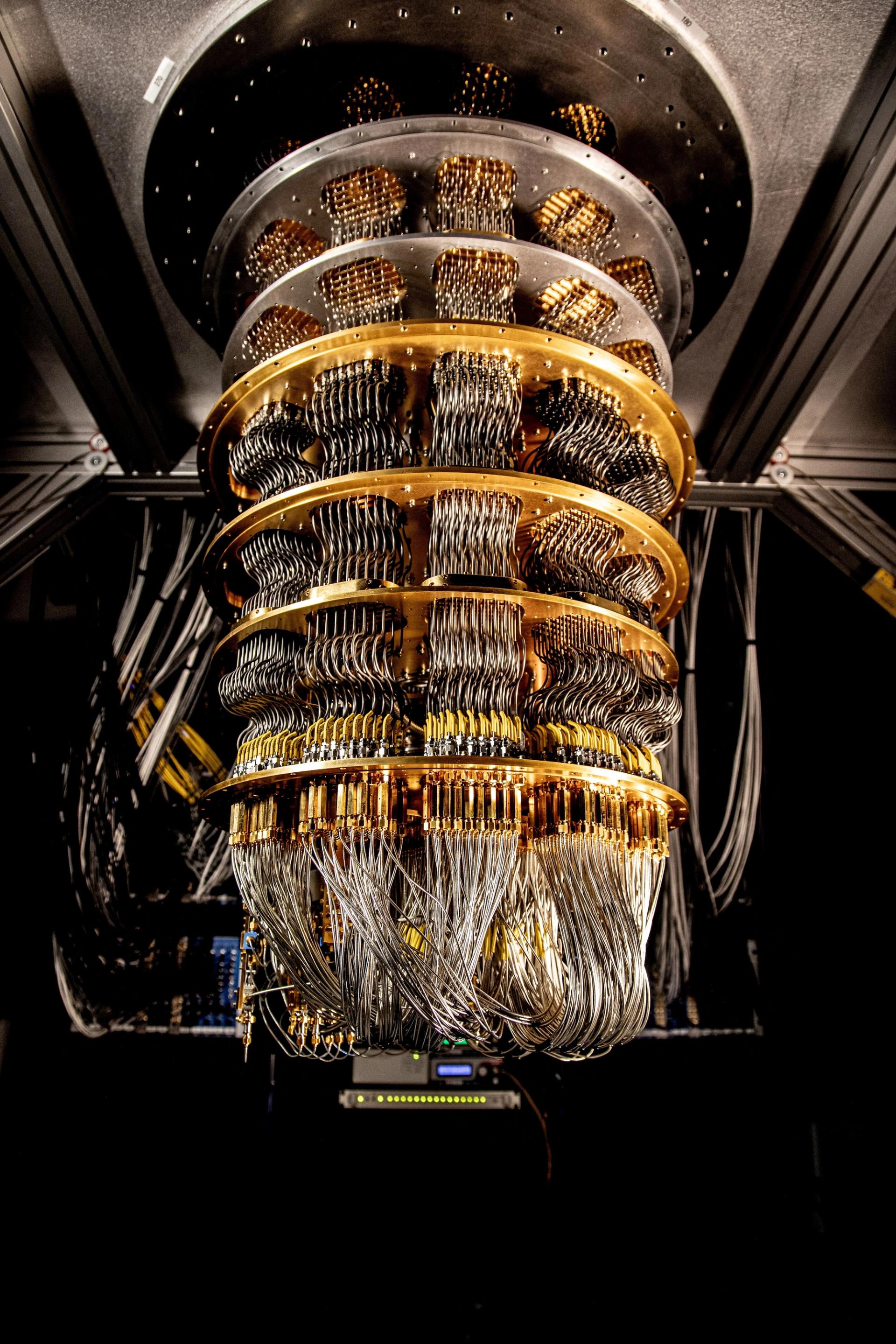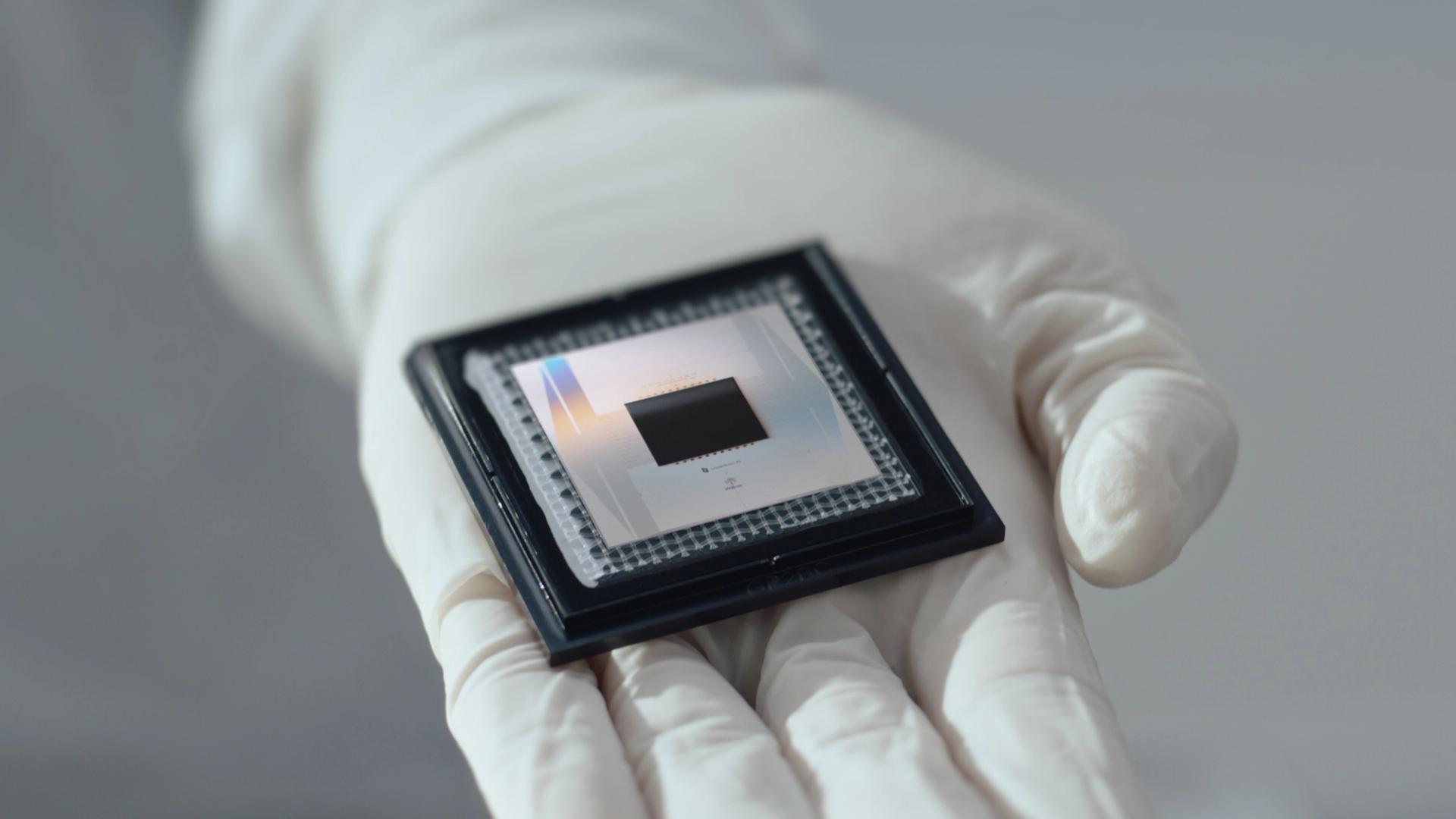The Scene
It’s easy to walk right past the building housing Google’s Quantum AI lab, located in an office park a few hundred miles south of the company’s comparatively glitzy and sprawling city state in Mountain View.
But what’s happening in Goleta, Calif. could one day make the advent of the search engine seem quaint.
Recently, the company demonstrated how its experimental quantum computer could perform a calculation in a few minutes — one that would have taken a regular “classical” computer ten septillion years to accomplish. And that wasn’t even the most difficult part.
By designing and building its own quantum computer chip, Google was able to do the unthinkable. As it got bigger, it also got exponentially better.
Quantum computers don’t work like regular computers, where the predictable pursuit of packing more and more transistors into a smaller area has driven the computer industry for more than half a century.
Instead of using transistors to do math, quantum computers use qubits, subatomic particles that do not follow the laws of classical physics and are prone to making errors. And for many years, adding more qubits has meant more and more errors.
Google’s chip, called Willow, is the first in history to show that as more qubits were added, the error rate actually dropped exponentially.
The advances have changed the mission. “Our focus has really switched from ‘can it be built at all’ to, ‘can it be built cheap enough,’” Hartmut Neven, who pioneered computer vision at the company before founding the Quantum AI lab in 2013, told me.
Know More
A key concept that makes quantum computers possible is called superposition, or the ability for things to exist in multiple realities at the same time.
Physicists like Albert Einstein theorized the concept — along with other quantum mechanics mysteries — long before they were possible to prove in labs.
With new tools, scientists can conduct “real world” experiments that confirm the theories that pioneering physicists could only use brainpower and math to prove.
For instance, what Einstein called “spooky action at a distance” — an almost mystical but nevertheless mathematically verifiable concept whereby two particles can become “entangled” by an invisible bond transcending space and time — is now observable in a Goleta, Calif. office park.
Google has constructed cooling devices nicknamed “chandeliers,” with spaghetti-like tubes and wires designed to create temperatures of minus 460 degrees Fahrenheit, making it the coldest place within 5,000 light years from earth.
Extreme cold is what it takes to cause a particle to enter a “quantum state,” essentially becoming a qubit.
Keeping qubits from warming up is one of the project’s biggest challenges and better temperature control was a major reason its new Willow chip was able to blow past the vaunted error correction milestone.

Step Back
A major factor in the success of the Willow chip was the company’s decision to construct its own, onsite manufacturing facility, said Anthony Megrant, chief architect for the program. He was also a graduate assistant at the University of Chicago under Andrew Cleland, a physicist and pioneer in the application of quantum theory who helped drive the field forward.
Quantum physicists can come up with a new theory and it can be rapidly tested in the company’s chip fab — a rare melding of deep academic research with the “move fast and break things” approach that big tech companies have made famous.
When the company was designing the Willow chip, employees at the office had a pool going for if, and when, they would reach the breakthrough threshold for quantum error correction.
When the first iteration of the Willow chip came off the line, the results were disappointing.
But on each attempt, the error rates were halving, Neven said. “It was clear that this was a nice result,” he said.
The team finally cracked the problem in the second quarter of 2024, and held a jubilant celebration in the cafeteria.
Google sent a preliminary paper describing the results to Arxiv.org before it was officially peer-reviewed and published in Nature.
Since then, Google has produced more Willow chips that show the same result, indicating the achievement was not a fluke.
The error correction breakthrough marks the second of six major milestones on the road to a scaled-up quantum computer, as outlined on the company’s website.
With each milestone, the challenges become less theoretical and more practical. At the end of the road, the biggest question will be how humanity will use it.
Now What?
To push its quantum ambitions, Google itself has had to enter a kind of corporate version of superposition. The brainpower needed to keep things very, very cold is somewhat different from the kind that can come up with theories about quantum mechanics.
Google has been investing in both, employing people whose brains work like Einstein’s and people who can crack hardcore engineering problems.
The man responsible for bringing those two worlds together in entrepreneurial entanglement is Neven. Standing next to an idle chandelier inside the Goleta lab, he said the project has entered a new phase. The challenge now is as much about engineering as it is theory.
While still in the experimental phase, Google’s quantum computer has already yielded real world results, aiding physicists in theoretical research. But the real value comes when it gets much, much bigger. Large-scale quantum computers, the theory goes, will be able to calculate the incomprehensibly vast and complex math that explains the known universe.
This could allow scientists to understand and create new molecules capable of revolutionizing biology and materials science. Looming existential threats, such as climate change, will likely require a quantum computing arsenal.
The shift from pure theory to brainy elbow grease could be one reason Alphabet CEO Sundar Pichai said he’s expecting the effort to make an impact on the company’s bottom line. “Quantum, to me, looks like where AI was in the 2010s,” he told me in a recent interview. “My goal is, in a five-year time frame, we are commercially applying quantum to tackle some use cases.”

To keep that ambitious schedule, the Quantum AI division is leaning not only on quantum scientists, but engineers, says Megrant.
“That’s a big transition that we’ve seen. Since I started here in 2009, we’ve seen a push toward bringing a lot of engineering disciplines into this project, both on our team and across the field,” Megrant said.
Reed’s view
More than a decade ago, Google went all in on artificial intelligence, hiring AI researchers out of academia and building its own chips to scale up massive supercomputers, crunching reams of data that the company collected from its many billion-user properties.
Betting on quantum was also a leap of faith and is following the same playbook. Bring in the scientists. Build the chips. Have faith that if this technology is going to upend the world as we know it, pioneering it will benefit Google’s bottom line in some way.
Of course, there’s always a possibility that the effort fails. Someone could beat Google to the scaled-up quantum computer. The startup PsiQuantum, for instance, is building massive facilities in Queensland, Australia and Illinois. It has promised to become the first at-scale quantum computer by 2027.
There are ways quantum computers could help in the development of AI for Google. But they are also so potentially disruptive that it’s almost difficult to imagine how the landscape will change when they arrive.
Notable
- In Quantum Insider, Matt Swayne explains the two sides of the multiverse argument and the Willow chip. Neven asserted that the success of the Willow chip supports the theory of the multiverse, or multiple dimensions that exist simultaneously. The claim stems from the ability of qubits to use superposition to make calculations with incomprehensible speed.

